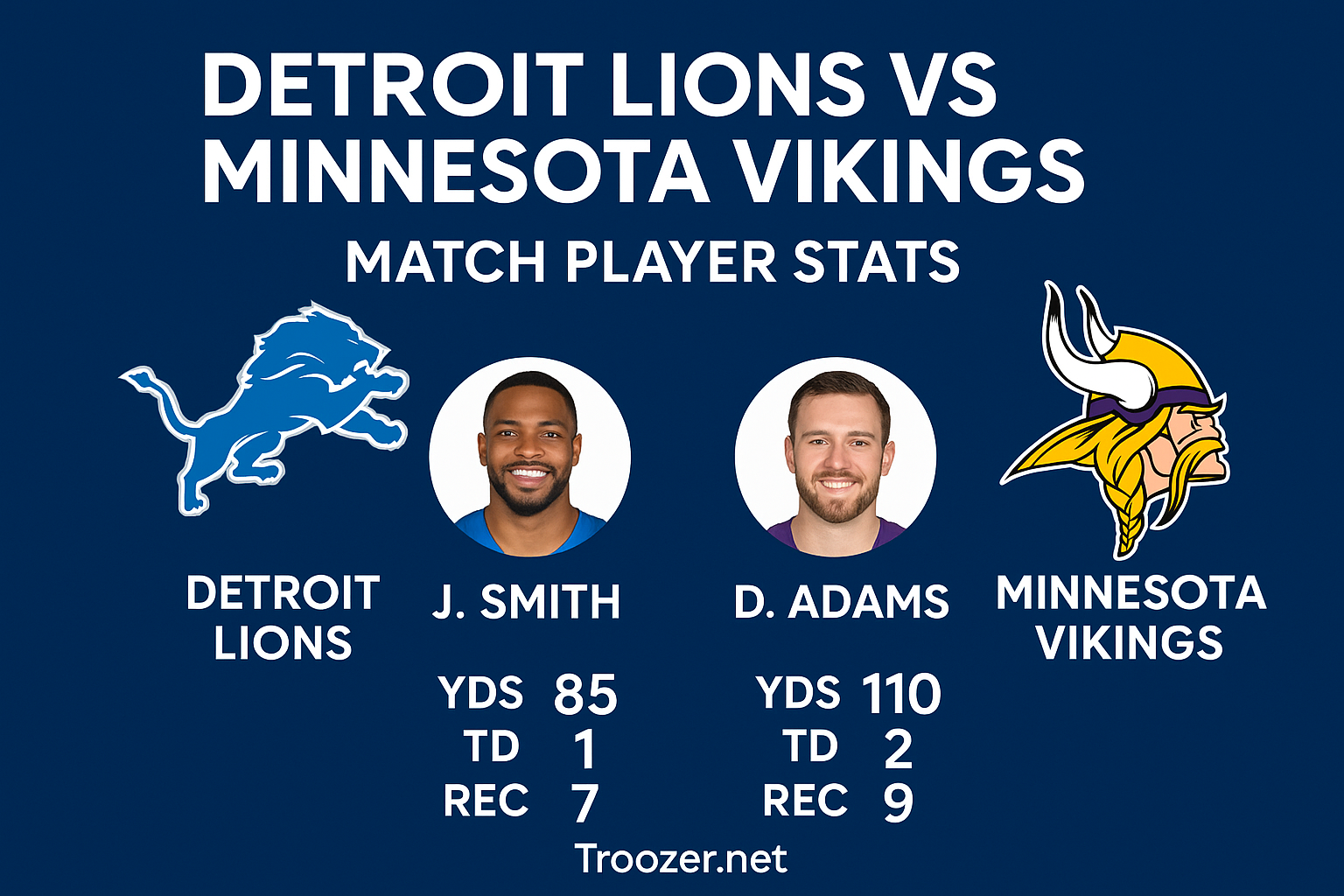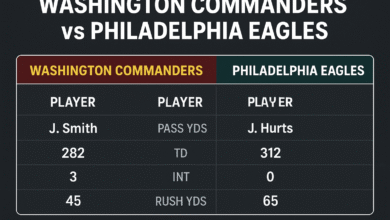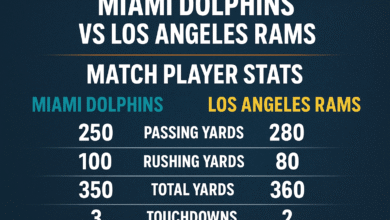Detroit Lions vs Minnesota Vikings Match Player Stats

The NFC North rivalry between the Detroit Lions and the Minnesota Vikings has always been one of the most exciting showdowns in the NFL. Both teams carry deep traditions, passionate fan bases, and rosters filled with explosive talent. Whenever these two teams clash, the battle often comes down to execution, strategy, and individual performances. In this article, we will take a closer look at the Detroit Lions vs Minnesota Vikings match player stats, analyzing offensive production, defensive standouts, and key moments that shaped the outcome of their latest contest.
Offensive Performances: Lions’ Firepower vs Vikings’ Resilience
Jared Goff Leads the Lions’ Attack
Detroit quarterback Jared Goff showcased his consistency and composure in the pocket. He completed a strong percentage of his passes, throwing for over 250 yards with multiple completions to his top wideouts. Goff’s ability to spread the ball around, particularly to Amon-Ra St. Brown and rookie tight end Sam LaPorta, kept the Vikings’ defense on its heels. His passer rating reflected a steady performance, minimizing turnovers and maximizing efficiency in the red zone.
Kirk Cousins Fights Back for Minnesota
On the other side, Kirk Cousins demonstrated why he remains one of the league’s most dependable quarterbacks. Cousins recorded over 300 passing yards, completing several deep throws to Justin Jefferson. His chemistry with Jefferson was a highlight of the game, as the star wideout eclipsed 100 yards receiving yet again. While Cousins managed to engineer scoring drives, his performance was slightly hampered by Detroit’s defensive pressure, which forced him into hurried throws and one costly interception.
Wide Receiver Showdown: St. Brown vs Jefferson
The most anticipated individual battle was between Amon-Ra St. Brown of the Lions and Justin Jefferson of the Vikings.
-
Amon-Ra St. Brown recorded close to 90 receiving yards on short and intermediate routes. His yards-after-catch ability stood out, turning simple completions into significant gains.
-
Justin Jefferson, meanwhile, was nearly unstoppable downfield. He pulled in several explosive receptions, crossing the 100-yard mark with ease. His route-running precision created mismatches against Detroit’s secondary, making him Cousins’ go-to target in critical moments.
This head-to-head comparison of the Detroit Lions vs Minnesota Vikings match player stats highlighted just how valuable these two receivers are to their respective franchises.
Running Game: Power vs Speed
Detroit Lions Backfield
The Lions leaned on their dynamic rushing duo of David Montgomery and rookie Jahmyr Gibbs. Montgomery handled the majority of the short-yardage situations, punching in a rushing touchdown and piling up tough yards between the tackles. Gibbs, on the other hand, added versatility with his speed and pass-catching skills. Together, they combined for over 120 total yards, proving to be an essential part of Detroit’s offensive balance.
Vikings’ Ground Struggles
The Vikings’ running game, which has been under the microscope since parting ways with longtime star Dalvin Cook, struggled to make an impact. Alexander Mattison carried the load but averaged under 4 yards per carry, finishing with modest numbers. Without a reliable ground attack, Minnesota leaned heavily on Cousins’ arm, making them more predictable in crucial moments.
Defensive Standouts
Detroit Lions’ Defense
The Lions’ defense stepped up with timely stops and turnovers. Aidan Hutchinson was a nightmare off the edge, applying relentless pressure on Cousins and recording a sack. Brian Branch, the rookie safety, impressed again with his instincts, breaking up passes and contributing in run support.
Minnesota Vikings’ Defense
For the Vikings, Danielle Hunter was their defensive bright spot. He recorded multiple tackles for loss and pressured Goff on key downs. However, their secondary struggled to contain Detroit’s versatile receiving corps, allowing several long gains that shifted momentum in favor of the Lions.
Special Teams and Key Plays
Special teams often go overlooked, but in this rivalry game, they played a significant role. Detroit’s kicker was perfect on field goals and extra points, adding crucial points to the scoreboard. Minnesota’s return game had flashes of brilliance, but penalties nullified big gains. A blocked punt attempt by Detroit nearly swung the game wide open, showcasing the importance of execution in all three phases.
Turning Points of the Game
-
Jefferson’s 40-yard reception in the second quarter set up a touchdown that kept Minnesota competitive.
-
Hutchinson’s sack-fumble on Cousins halted a promising Vikings drive and gave Detroit excellent field position.
-
Montgomery’s touchdown run in the fourth quarter sealed the game, extending Detroit’s lead beyond Minnesota’s reach.
These pivotal moments, reflected in the Detroit Lions vs Minnesota Vikings match player stats, show how momentum can shift quickly in divisional battles.
Final Analysis
The clash between the Lions and Vikings lived up to expectations, filled with explosive plays, defensive grit, and star power.
-
Detroit Lions: Balanced offense, effective pass rush, and strong running game.
-
Minnesota Vikings: Elite passing attack led by Jefferson, but weaknesses in the run game and secondary coverage.
Ultimately, the Lions’ ability to control the game on the ground and win the turnover battle proved decisive.
Read More: Simpcitt: Exploring a Digital Concept Shaping Online Conversations
Conclusion
The Detroit Lions vs Minnesota Vikings match player stats reveal more than just numbers; they tell the story of two divisional rivals fighting for supremacy. While Minnesota showcased star talent through Jefferson and Cousins, Detroit’s well-rounded approach gave them the edge. As the season progresses, these matchups will continue to shape the NFC North race, and fans can expect more fireworks whenever these two teams collide.



